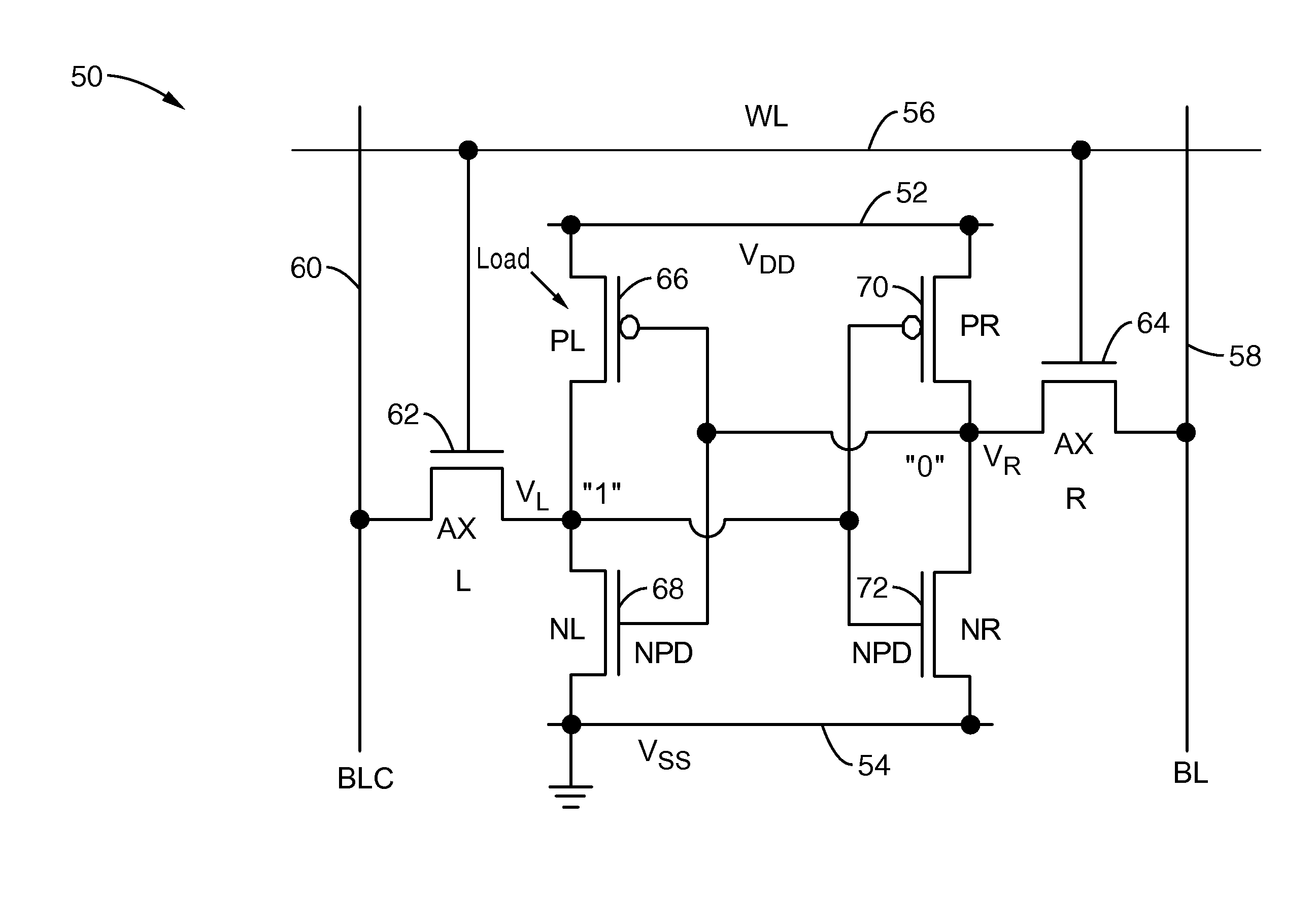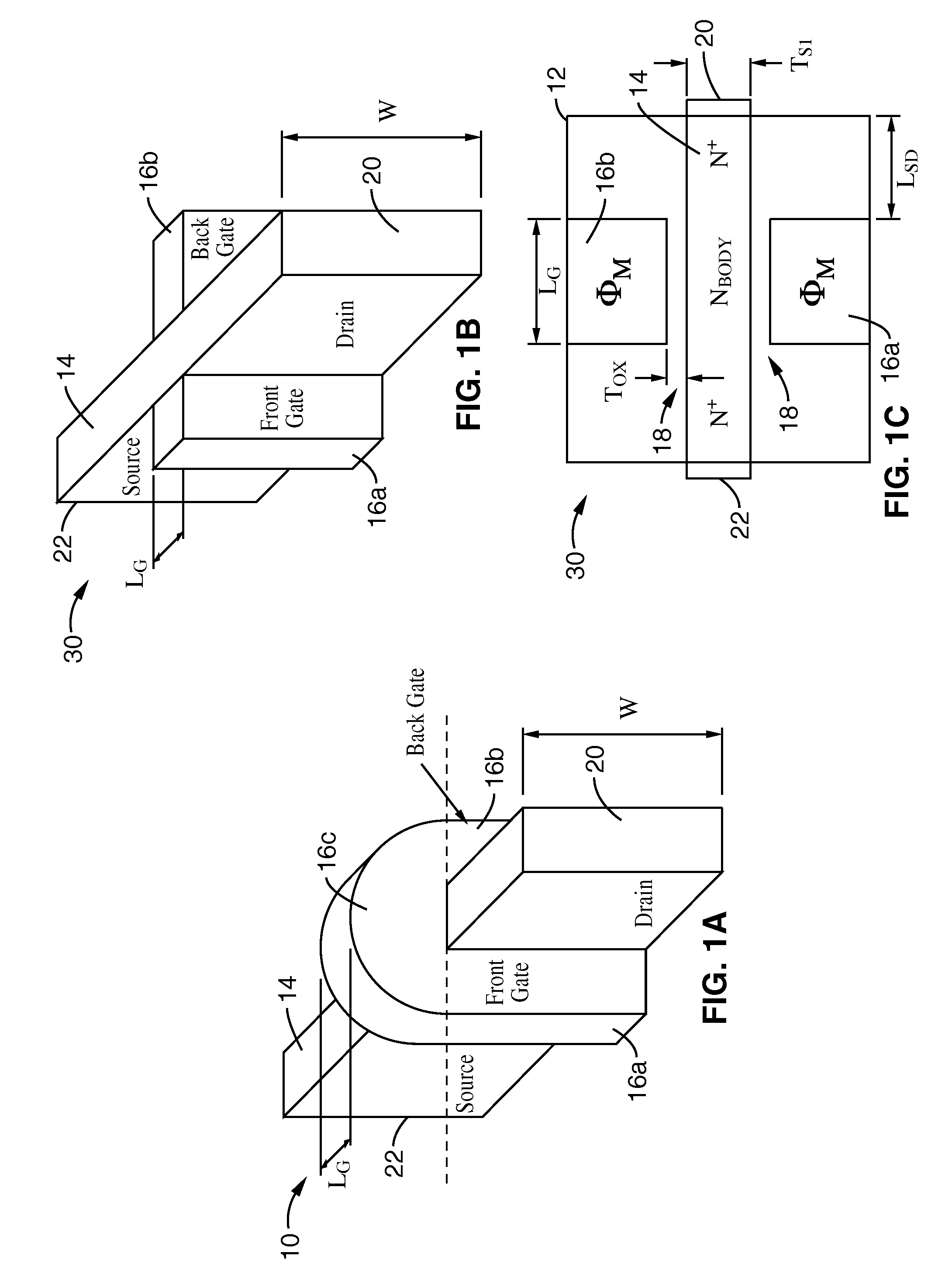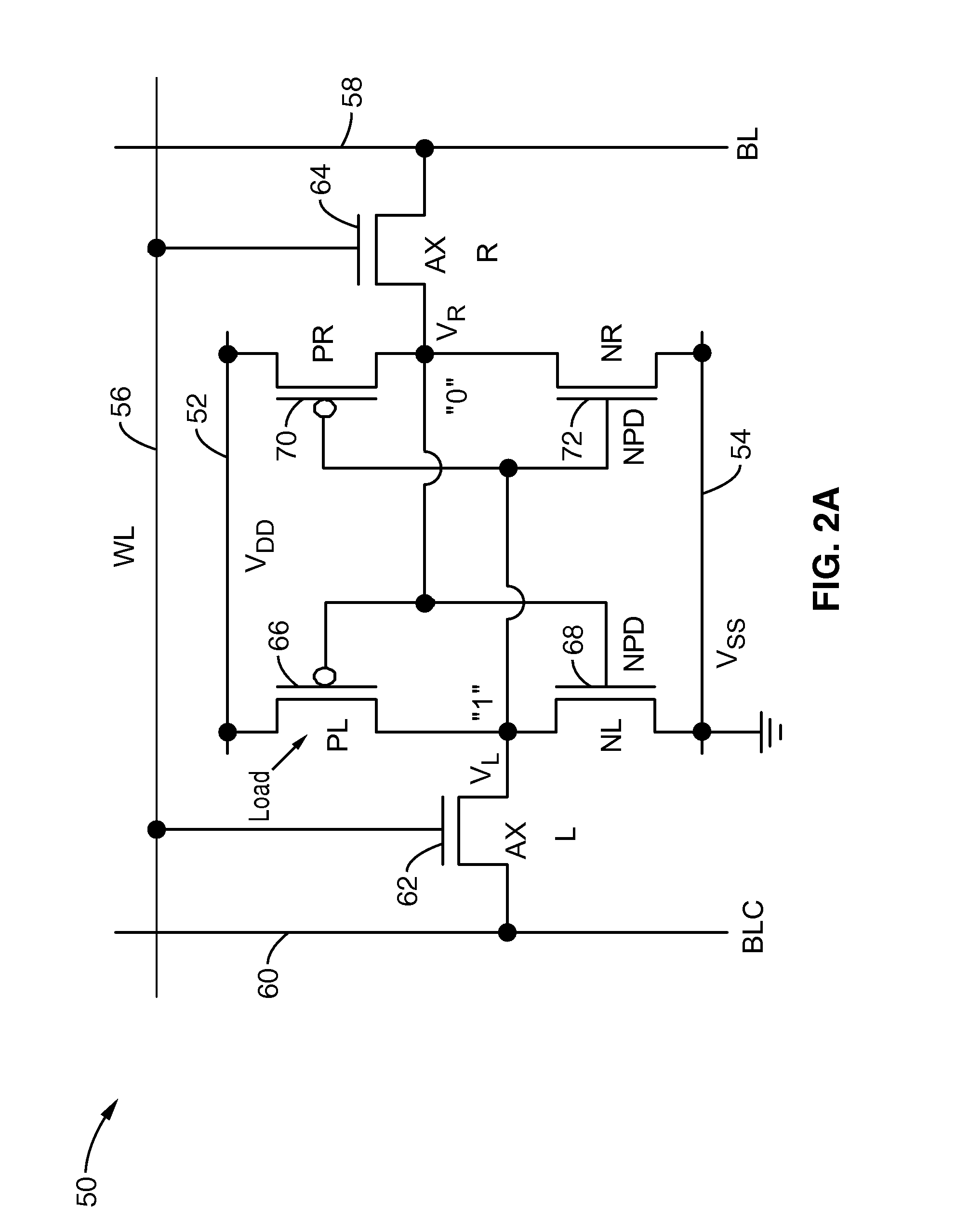Finfet-based SRAM with feedback
a sram and feedback technology, applied in the field of memory devices, can solve the problems of increasing transistor leakage and parameter variation, compromising cell stability, etc., and achieve the effects of reducing leakage current, reducing the area of memory cells, and sufficient noise margins
- Summary
- Abstract
- Description
- Claims
- Application Information
AI Technical Summary
Benefits of technology
Problems solved by technology
Method used
Image
Examples
example 1
FinFET Design and Modeling
[0096]FIG. 1A through FIG. 1C illustrate views (perspective and top) of FinFET transistor embodiments 10 with a double-gated structure, and 30 adapted with a back-gate structure.
[0097] In the embodiment 10 of FIG. 1A, a fin body 14 is shown making up the transistor channel. A gate 16 overlays the fin, and includes a first side portion 16a, a second side portion 16b and a top portion 16c (above the body of the fin). It should be noted that the gate is shown in a vertical fin configuration which can be of similar dimension to the fin body of the channel. This configuration, having gates on both sides of the channel but which are not electrically separate from one another, is generally referred to as a double-gated FinFET.
[0098] In FIG. 1B, the top gate portion 16c of FIG. 1A has been removed to create the FinFET embodiment 30 configured with separate (i.e., substantially electrically isolated) front-gate 16a and back-gate 16b. FIG. 1C illustrates a top vie...
example 3
Back-Gated (BG) FinFET 6-T SRAM Cell Designs
[0110] Whereas adaptive body biasing becomes less effective with bulk-Si MOSFET scaling, back-gate biasing of a thin-body MOSFET remains effective for dynamic control of Vt with transistor scaling, and can provide improved control of short-channel effects as well. The strong back-gate biasing effect can thus be leveraged to optimize the performance of FinFET-based SRAMs through a dynamic adjustment of the effective cell β-ratio.
[0111]FIG. 6A illustrates an embodiment 90 of an SRAM memory cell. The power supply is represented as VDD 92 and Vss 94. Signals are represented with a word line 96, bit-line 98, and bit-line complement 100. A first access transistor 102 is on a first side of the memory cell, and a second access transistor 104 is on a second side of the memory cell. The four transistors which form the cross-coupled inverter latch of the memory cell thus comprise transistors 106, 108 on the first side, and transistors 110, 112 on t...
example 4
4-T SRAM Cell with Dynamic Feedback
[0116] Toward providing further reductions in cell area, aspects of the invention include embodiments of 4-T SRAM cell designs. In conventional attempts to create a 4-T SRAM cell design, high-leakage PMOS access transistors are used to compensate for the leakage currents in the pull-down NMOS transistors during standby. Although compensation current is only needed for the “1” storage node, both PMOS access transistors draw currents from the bit-lines, resulting in high power dissipation. Dynamic control of the PMOS threshold voltage (Vtp) according to the present invention offers a means for selectively adjusting the compensation leakage current, and also provides higher effective β-ratio for the 4-T SRAM cell design, thereby making the manufacture of 4-T SRAM cells practical for a number of application areas.
[0117]FIG. 8A and FIG. 8B illustrate an embodiment 130 of a four transistor (4-T) SRAM memory cell. Power is shown as Vss 134, while VDD is...
PUM
 Login to View More
Login to View More Abstract
Description
Claims
Application Information
 Login to View More
Login to View More - R&D
- Intellectual Property
- Life Sciences
- Materials
- Tech Scout
- Unparalleled Data Quality
- Higher Quality Content
- 60% Fewer Hallucinations
Browse by: Latest US Patents, China's latest patents, Technical Efficacy Thesaurus, Application Domain, Technology Topic, Popular Technical Reports.
© 2025 PatSnap. All rights reserved.Legal|Privacy policy|Modern Slavery Act Transparency Statement|Sitemap|About US| Contact US: help@patsnap.com



